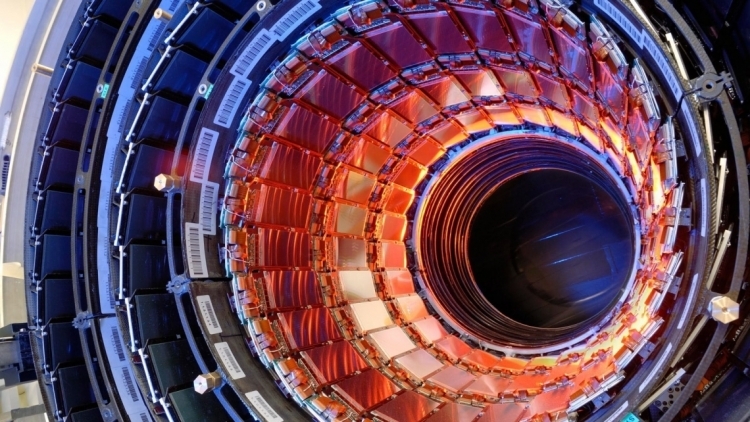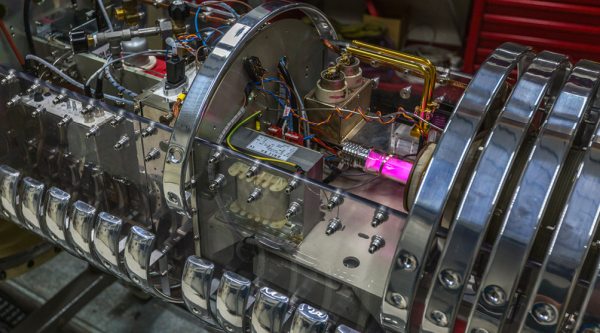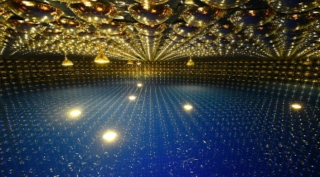
The CMS Collaboration announced the first observation of a new way the B0s meson – a particle combining the beauty quark (b) and the strange quark (s) – can disintegrate. The observation involves two other particles, the well-known ϕ meson, which consists of a strange quark and its antiquark, and a mysterious particle called X(3872), which was first discovered only in this century (2003).
As the name “X” suggests, the jury is still out on what this particle really is. Many scientists believe that it is an exotic state. Some of them proposed that X is a "tetraquark” - a fascinating object that consists of a diquark, composed of a charm quark and an up quark, and an antidiquark, composed of the corresponding antiquarks. Others think that X could be a "meson molecule" consisting of two charmed mesons. Other explanations have been proposed as well.
The newly observed decay is a result of a sophisticated analysis of the large data sample that the CMS experiment recorded during the three-year-long period from 2016 through 2018. Both the ϕ meson and X(3872) live for only a fleeting moment and decay into other, well-established particles. The ϕ meson is detected as a pair of oppositely charged kaons – the lightest strange particles. At the same time, X disintegrates in a more complicated way, into a J/ψ particle and two oppositely charged pions.

Figure 1: Sketch of the production of a B0s particle, and its decay to muons, pions, and kaons
The J/ψ particle was the first charmed particle ever observed (in 1974); the event often referred to as the "November Revolution". Two groups of physicists, one working on the East Coast of the United States at the Brookhaven National Lab, and one from the Stanford Linear Accelerator Center on the West Coast, have discovered it simultaneously, but could not agree on the name. Hence this particle is the only one that has two names: J and ψ, combined in the compound name "J/ψ”. The significance of that half-a-century old discovery is that before the discovery, physicists thought that there were only three quarks in Nature: up, down, and strange. The observation of the fourth, charm quark, which is what the J/ψ particle is made of, soon confirmed that the number of quarks is twice as large, with the fifth (beauty) and the sixth (top) quark discoveries to follow in the 1980s and the 1990s. The J/ψ particle is detected in CMS via its decay into a pair of muons. Thus, the new B0s decay produces six particles: two pions, two kaons, and two muons, which is quite a zoo! The Figures 2 and 3 show the B0s → X(3872) ϕ and X(3872) → J/ψ π+π- signals observed by CMS, which are seen as characteristic peaks ("resonances") in the mass spectrum of the decay products.

Figure 2: The reconstructed mass distribution of X(3872) ϕ after removal of the background. The peak corresponds to the B0s signal.

Figure 3: The reconstructed mass distribution of J/ψ π+π-. The peak corresponds to X(3872) signal.
What makes the new observation particularly interesting is that the rate at which B0s decays to X(3872) ϕ is about twice as low as that for the previously observed B+ → X(3872) K+ decay. This B+ meson decay is a close analogue of the new decay, as the B+ meson is a cousin of the B0s meson, in which the strange quark is replaced with the up quark, while the K+ meson is similarly related to the ϕ meson. The fact that the two measured decay rates differ from one the other points to an important difference between the strange and up quarks in these decays, making the discrete charm of the X particle ever more strange!
Read more about these results:
- CMS Paper "Observation of the B0s → X(3872)φ decay"
- All CMS physics briefings
- All CMS journal publications
- All CMS preliminary results
- All CMS results






